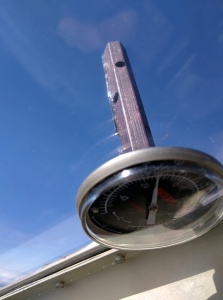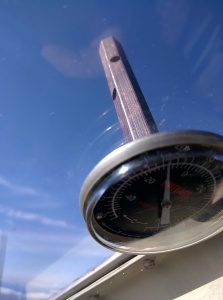On Friday, when I was flying back from Fredericton to Ottawa, I picked up a splash of clear ice in a cloud top over Maine.
I use my Outside Air Temperature (OAT) probe as an early ice detector, since thinner surfaces collect ice before fatter ones (like a wing). Here’s what I saw:
I immediately climbed higher, even though the air was colder (-12°c), because I knew that the sunlight would cause the ice to sublimate, passing straight from frozen to vapour without ever thawing. These pictures show what happened over the next half hour:
Sublimation is much slower than thawing, so if you have the choice to descend into warmer air, do it. When there’s just a trace, though, and you can get safely above the clouds, sublimation isn’t a bad option.





Note that sublimation works less well on areas of the airplane that aren’t in sunlight – like the engine air filters. Ask me how I know.
My pitot-static blade is under the wing, so I had a good illustration of that phenomenon myself on Friday. Fortunately, the heating element was working fine.